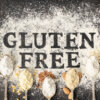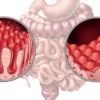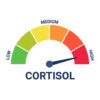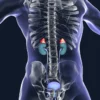
IBS is one of the most common digestive complaints that impacts approximately 20% of the UK population.
The true figure may be much higher than this, as some research estimates that only 30-50% of those with IBS seek medical help.
Similar studies find that up to 80% of those with IBS feel that food is a trigger for an increase or flare-up in symptoms. While most of these trigger foods are related to their FODMAP content, it is possible for non-FODMAP containing foods to be an issue.
In some cases, histamine-containing foods can be a particular issue for those with IBS. While is has not been studied in as much depth, there are reports of histamine-rich foods being a trigger in as much as 50% of IBS sufferers.
What is Histamine and Its Role in Digestion?
While histamine in too high amounts can lead to issues, in the right amount and when the gut is healthy, histamine can be beneficial.
There are 3 key ways in which histamine supports gut health and digestive function:
- Gut motility – histamine supports appropriate muscle contractions in the bowel, supporting natural bowel movements by preventing constipation or diarrhoea.
- Immune response – appropriate levels of histamine can be released in the gut during an immune response to defend the body and the gut from a pathogen.
- Digestive enzymes – histamine supports gastric enzyme secretion, a key factor involved in gut health and digestive health.
However, histamine at elevated levels can lead to a wide range of digestive as well as non-digestive symptoms and reactions.
High Histamine Foods and Their Impact on IBS
There is a range of foods that contain higher amounts of histamine. These all have the potential to increase the overall level of histamine in the gut, which may then trigger symptoms.
Rather than one food being the worst, it can be the total amount of histamine consumed
Aged and Fermented Foods
- Aged cheeses (Parmesan, Gouda, Roquefort)
- Sauerkraut
- Miso
- Soy sauce
- Vinegar (especially balsamic, red wine vinegar)
- Yogurt
- Kefir
- Kimchi
Alcoholic Beverages
- Wine (especially red wine)
- Beer
- Champagne
- Cider
- Fortified wines (like sherry and port)
Certain Fruits and Vegetables
- Tomatoes
- Aubergine
- Spinach
- Avocado
- Strawberries
- Bananas
- Citrus fruits (oranges, lemons, limes)
Processed and Smoked Meats
- Salami
- Pepperoni
- Ham (especially smoked)
- Bacon
- Sausages
- Hot dogs
- Prosciutto
Seafood
- Tuna
- Mackerel
- Sardines
- Anchovies
- Herring
- Smoked fish
- Shellfish (shrimp, crab, lobster)
Leftover or Slow-Cooked Foods
- Stews
- Soups
- Casseroles
- Slow-cooked meats
- Foods kept in the fridge for multiple days before eating
The Link Between Histamine Intolerance and IBS
As described, histamine plays a beneficial and important role in maintaining digestive health. But when the gut is disturbed and histamine levels are in excess, this is where this compound can present as an issue.
The 3 main ways this can occur are via an intolerance to histamine, influencing inflammation, altered bowel motility and increased nerve sensitivity.
This can occur via biological mechanisms that include:
- Alternations in the gut microbiome, with more histamine-producing bacteria present.
- Irritation to the gut lining, leading to a reduction in the main enzymes that break down histamine, DAO.
- Increased intestinal permeability (also called leaky gut)
- Over-/inappropriate stimulation of the smooth muscles in the gut, causing cramping
- Over secretion of gastric acid, which can irritate the gut lining, as well as heartburn and reflux
- Activate sensory nerves, leading to pain, visceral hypersensitivity, as well as increased urgency of bowel movements.
The fact that histamine can influence muscle contractions in the bowels is largely behind the looser bowel movements/diarrhoea that can be present in those with histamine intolerance. In IBS terms, this can be referred to as IBS-D.
Histamine production can also lead to influence nerve function, leading to increased pain and nerve sensitivity in the bowel. This is often due to histamine’s role with mast cells, which are in very close proximity to nerves in the bowel wall/gut lining.
How to Identify If Histamine is a Trigger for Your IBS
A short-term low-histamine diet can be a helpful way to initially assess histamine tolerances. This can generally yield improvements in symptoms over 2-4 weeks, but often, in clinical symptoms, can improve (if histamine is indeed an issue) in a short-term time frame.
While there isn’t a specific test that is most reliable, certain tests may be considered to offer an insight into histamine levels.
DAO (Diamine Oxidase)
- This blood test offers insight into the levels of this enzyme in the blood.
- Due to the role of DAO in the gut and how it breaks down histamine, low levels of DAO may indicate reduced ability to process histamine which then leads to histamine levels rising.
Histamine Blood Levels
- Levels of histamine can be measured in a blood sample.
- This test may not be reliable as histamine levels can fluctuate on a regular basis.
Tryptase Blood Levels
- This test measures levels of the enzyme tryptase in the blood, which is released by mast cells alongside histamine.
- This can indicate a condition called MCAS, which leads to high histamine levels.
Managing High-Histamine Foods in an IBS Diet
While aiming to address the cause of a possible histamine intolerance needs to be a focus of a therapeutic approach, reducing histamine foods can help to improve symptoms.
It may also help to support a therapeutic approach. Excess levels of histamine activate the gut lining further, creating an ongoing cycle. Therefore, reducing histamine, be that with a low-histamine diet or histamine-lowering medications, can not only manage symptoms but also improve outcomes and results.
Low-Histamine Diet Approach
A low histamine diet reduces foods that contain high levels of histamine and foods that stimulate the body’s release of histamine.
| High Histamine Foods | Histamine Liberating Foods |
|
|
The initial phase of a low histamine diet is for 2-4 weeks. This is generally enough time to understand how much this diet may or may not be helpful.
The low-histamine foods to include and focus on during this time are:
- Fresh meat (chicken, turkey, lamb – cooked quickly after purchase)
- Freshly caught fish (but fish spoils fast and can become high histamine quickly)
- Eggs
- Gluten-free grains (rice, quinoa, oats, millet)
- Most fresh vegetables (except for a few like tomatoes, spinach, and aubergine)
- Fruits (especially apples, pears, blueberries, and mangoes)
- Dairy substitutes (coconut milk, rice milk – avoid fermented ones)
- Herbs like thyme, basil, and chives
- Fats (olive oil, coconut oil)
- Filtered water and herbal teas (like chamomile, ginger)
Probiotics for Histamine Intolerance
Certain probiotics have been shown to be helpful for IBS and gut issues such as bloating. However, when there are histamine intolerances also these probiotics may increase symptoms in sensitive patients.
While this is not the case in all patients with histamine issues, certain probiotics have been indicated to be safer, while others may be more problematic.
Histamine-lowering probiotic strains include:
- Lactobacillus rhamnosus GG
- Lactobacillus plantarum
- Bifidobacterium infantis
- Bifidobacterium longum
- Bifidobacterium breve
- Lactobacillus salivarius
Probiotics strains that may increase histamine levels and therefore before to avoid include:
- Lactobacillus casei
- Lactobacillus bulgaricus
- Lactobacillus reuteri (some strains produce histamine)
- Streptococcus thermophilus
- Lactobacillus helveticus
Antihistamines and Natural Alternatives
Alongside probiotics, natural antihistamines can be used to remove histamine from the gut as well as calm mast cells. These mast cell stabilisers can be important to help reduce the level of histamine constantly being produced.
Natural Antihistamines
- Quercetin – a natural antihistamine
- Vitamin C – helps to degrade histamine by supporting DOA function
- Bromelain – helps with the absorption of quercetin and is also anti-inflammatory
- Nettles – work by targeting and blocking the histamine receptors
- NAC – via anti-inflammatory processes and calms mast cells
- DOA – works within the gut to break down histamine
Further support can be put in place with specific supplements to calm and stabilise mast cells. This helps to prevent further histamine being released.
Mast Cell Stabilisers
- Luteolin – inhibits and calms mast cells
- Curcumin – anti-inflammatory and also stabilises mast cells
- EGCG – a strong antioxidant which can also calm mast cells
- Resveratrol
- Omega-3
Possible Side Effects and Precautions
Patients with IBS and histamine issues can often be more sensitive to dietary adjustments as well as supplements than other patients. This means that side effects may be more common.
These side effects may include an increase in digestive symptoms, skin reactions or headaches. However, these can be unpredictable.
Therefore, a cautious approach is to make sure changes take place slowly while monitoring symptoms and possible side effects. This may look like started with a single supplement at a very low dose and increasing gradually. (In some cases, opening capsules and starting with ¼ of the powder inside has been needed).
Nutritional Deficiencies from Restrictive Diets
It’s important to follow a low-histamine diet with the care and support of a registered practitioner.
Not only does this ensure that a low histamine diet is followed in the correct way, but also for the correct amount of time, while also taking into consideration any nutritional requirements.
Common nutrients that may be deficient or insufficient on a low histamine diet include:
- Vitamin B12
- Folate (Vitamin B9)
- Omega-3 fatty acids
- Vitamin C
- Calcium
- Vitamin D
- Iron
- Zinc
- Protein (due to restricted animal products)
- Vitamin B6
- Copper
- Magnesium
When to Consult a Doctor
While it can be appropriate to seek medical advice at any point, there are certain symptoms that may indicate that medical advice may be required.
This can include:
- A general worsening of symptoms over time
- Symptoms that are similar to an allergic response. For example trouble breathing, low blood pressure and closing of the throat
- Ongoing and severe skin reactions such as hives and rashes.
Conclusion
Histamine can play a central role in a healthy but as we have discussed, elevated levels can lead to disruption. This can be common in cases of IBS.
While focusing on addressing underlying issues can be the primary aim, a low-histamine diet can play an important role. Not just in managing symptoms, but by lowering the level of histamine in the body to support the treatment process.






